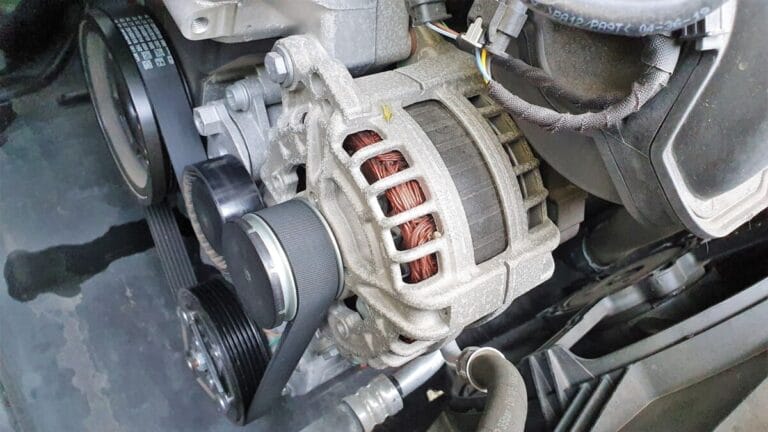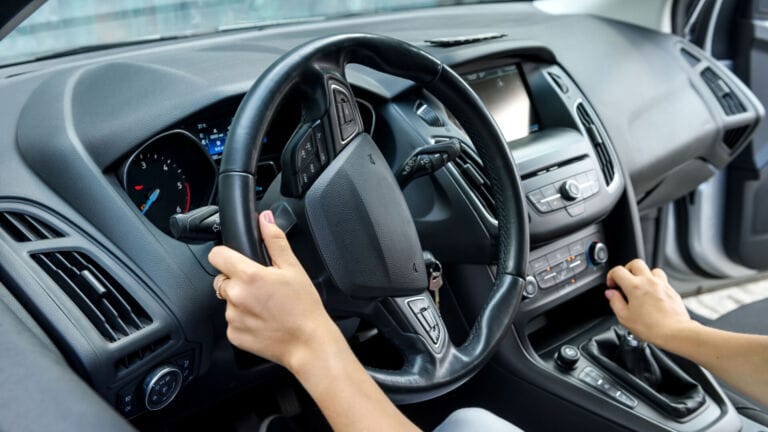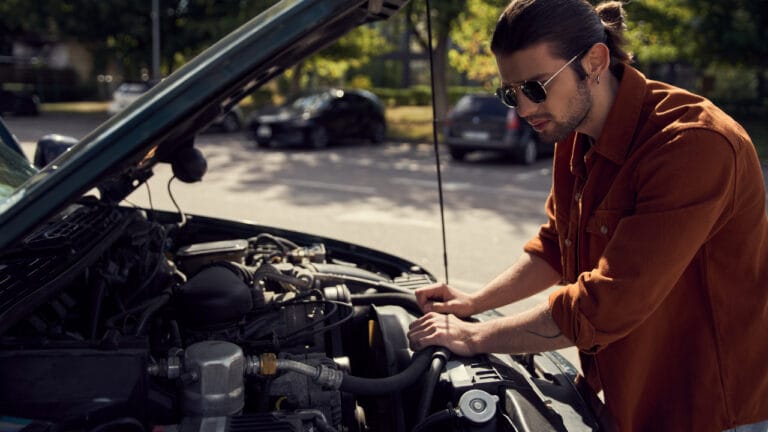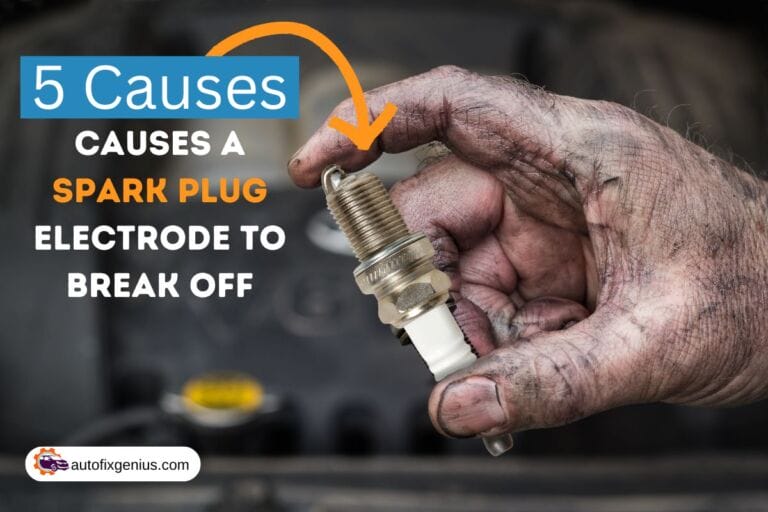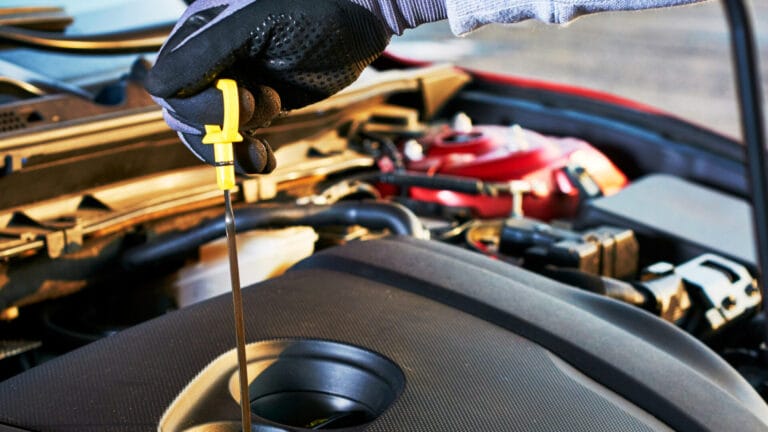Why Is My Alternator Charging at 15 Volts?
Ever found your car in superhero mode, serving up more voltage than your trusty battery needs? It’s as if your vehicle has chugged one too many energy drinks, and that spike to 15 volts is the signal that things are getting a bit too charged up for comfort.
As we know the standard alternator voltage ranges from 13.5 to 14.8 volts which is essential for optimal car electrical system performance. Now you may ask then why is my alternator charging at 15 volts?
Well, that extra voltage is like a flashing warning sign, suggesting potential overcharging.
The usual suspect for your alternator charging at 15 volts is a faulty voltage regulator. But if it’s found innocent, then the alternator itself is causing overcharging.
How to find which is the real culprit and how to fix them?
I am here to find all your answers. Let’s jump to play the automotive detective game and figure out how to bring that electrical exuberance back to a steady rhythm!
How Faulty Voltage Regulator Cause Alternator Overcharging?
The alternator is like a power generator in your car. It produces electricity to run your lights, radio, and other electrical stuff, and it keeps the battery charged. And the voltage regulator is like a control manager for the alternator. It makes sure the electricity produced by the alternator is at the right level, not too high or too low.
If the regulator fails, it may allow the alternator to produce excessively high voltage levels that make the alternator overcharging.
How?

Imagine the voltage regulator as a traffic cop for your car’s electrical system. Its job is to control the flow of electricity from the alternator to keep things running smoothly. When the voltage regulator fails to regulate the flow of electricity, it will let too much electricity pass through. This excess electricity can overload the system, causing the alternator to produce more voltage than your car needs.
This extra voltage can damage your car’s electrical parts, battery, and even the alternator itself.
How To Fix Alternator Charging At 15 Volts
The alternator’s output voltage is controlled by the voltage regulator, so a faulty one can cause overcharging. But we can’t do anything just by assuming. Test the voltage regulator using a multimeter or have it tested by a professional. If it’s defective, you need to replace it.
When replacing it, ensure the new voltage regulator is compatible with your car’s alternator ms and gm, and the voltage regulator.
Replace Your Voltage Regulator
- Give your car a little break, and disconnect the negative terminal of the battery.
- Grab your detective hat and find the voltage regulator, (hanging out on the alternator or in the engine compartment). Check your car’s manual if you need a hint.
- Grab your toolbox and gently unclip the old voltage regulator. Take note of those screws or bolts holding it in place; they’re your tickets to freedom. Take a mental snapshot of the wire connections – you’ll need it later.
- Roll out the red carpet for your new voltage regulator. Secure it in place with those trusty screws or bolts. Now, let’s play matchmaker – reconnect those wires to their soulmate terminals and the battery.
- Finally, start your engine, and grab your multimeter. Check the voltage at the battery terminals. Ideally, it should be dancing between 13.5 to 14.5 volts. If it is, celebrate – you just pulled off a superhero move!
When Should You Consider Alternator Replacement?
If overcharging persists even after replacing the voltage regulator, it may be time to consider alternator replacement. Be assured by checking the symptoms of a damaged alternator.

Symptoms Of Alternator Damage-
- Your car’s lights, both inside and outside, might appear noticeably dimmer than usual.
- The dashboard warning light (usually shaped like a battery) may illuminate.
- You might hear unusual noises, like grinding or whining, coming from the alternator area.
- Your car may have trouble starting, or you might hear a clicking sound when you turn the key.
- A damaged alternator can lead to a drained battery, causing your car to stall or not start at all.
If you find these symptoms present, replacing the alternator is advisable.
5 Easy Steps to Replace Your Alternator-
- Disconnect the negative battery terminal as we did while changing the regulator. Find your alternator; it has a bunch of wires and a pulley. Check the car manual for treasure map details.
- Using the toolkit unscrew the old alternator. Gently unplug all those connections and again keep a note of where each wire goes. You have to reattach them later.
- Roll in the new alternator. Secure it with those trusty screws and plug in the wires.
- Finally, reconnect the battery and start the engine. It’s like waking up your car after its short nap,
- Your multimeter is the applause meter – use it to recheck the voltage. It should now be grooving between 13.5 to 14.5 volts.
If you are not comfortable or familiar with automotive electrical systems, call a professional without thinking twice. They have the expertise and tools to diagnose and repair charging system issues effectively.
But as it’s easy DIY work, I highly suggest you do it yourself maintaining the safety precautions.
Consequences of Alternator Charging At 15 Volts
A car’s electrical system is like an orchestra of perfectly tuned notes, so hitting 15 volts can spell trouble for your beloved vehicle. lets know the potential consequences of an overcharging alternator and how it can impact your car’s electrical system
Overcharging
Imagine your phone on a charger, but instead of stopping at 100%, it keeps going. That’s what happens when your alternator hits 15 volts. Your battery might feel overwhelmed, leading to overcharging. This can cause the electrolyte in your battery to boil and reduce its lifespan.
Light Bulb Burnout:
Your car’s electrical components, especially the light bulbs inside and outside your car, might not be the biggest fans of the 15-volt disco. It might start showing off some seriously mixed vibes, like a funky disco flicker. The higher voltage can lead to premature burnout, leaving you in the dark sooner than expected.
Sensitive Electronics Suffer:
Amid this voltage fiesta, your car’s engine control module might start raising an eyebrow. Modern vehicles are packed with sensitive electronics that prefer a stable environment rather than a chaotic light show caused by overcharging. The extra voltage can stress out these components, potentially causing malfunctions or even permanent damage.
Rubber Belt Rebellion:
The alternator is typically powered by a rubber belt connected to the engine. Running at 15 volts constantly might turn this humble belt into a rebel, protesting with excessive wear and tear. It could lead to more frequent replacements and unexpected breakdowns.
Fuel Efficiency Frown:
Your car’s fuel injectors and other engine components might not appreciate the high voltage party. This can affect the overall performance and fuel efficiency of your vehicle, making you spend more time and money at the pump.
Voltage Regulator Rumble:
Most alternators have a built-in voltage regulator to keep things in check. If it’s not doing its job, the excess voltage can wreak havoc on your entire electrical system, turning it into a chaotic mess.
Frequently Asked Questions
Can a bad ground cause an alternator to overcharge?
Yes, a bad ground can disrupt the proper functioning of the alternator’s voltage regulation. This disruption may lead to erratic charging, potentially causing the alternator to overcharge the battery.
Can driving with a 15-volt alternator damage my battery?
Yes, driving with a 15-volt alternator can damage your battery. High voltage can cause electrolyte loss and overheating and limit the lifespan of the battery.
How can I check my alternator for overcharging?
To check if your alternator is overcharging, measure the battery voltage using a voltmeter while the engine is running. If it stays above 14.4 volts, it’s likely overcharged.
Is driving with a 15-volt alternator safe?
No, it’s not safe to drive with a 15-volt alternator. Over time, the high voltage can damage batteries and delicate gadgets.
End Quote
Having your alternator charging at 15 volts can be a cause for concern, yet unraveling the mysteries behind it puts you in the driver’s seat for solutions. Now equipped with insights into the reasons behind the alternator charging at 15 volts, you’re better prepared to navigate the fix-it landscape.
Remember, the key lies in following installation guidelines and meticulous testing after replacing the voltage regulator. By doing this, you will ensure that your alternator becomes disciplined in charging at the right voltage once again.
Despite this regulator overhaul, overcharging persists, so it might be time to replace the alternator itself. Overcharging can create several problems for you (shared above), so it is important to deal with this as soon as possible.


